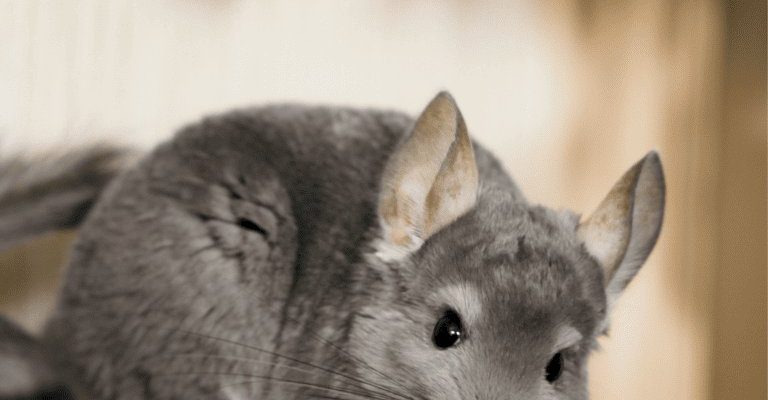
Imagine sitting across from a friend at your favorite café, and you learn there’s a whole world of chinchilla behavior to explore. You pour your coffee while discussing how their lively jumps aren’t just for fun; they serve specific purposes. The more you understand their actions, the better you can meet their needs. Let’s dive into the fascinating world of chinchilla behavior, breaking down what you can expect and how to enhance your chinchilla’s happiness.
Why Do Chinchillas Jump?
Chinchillas are remarkable jumpers, capable of leaping up to six feet high! You might be wondering, “Why do they jump so much?” Well, jumping is a natural behavior for chinchillas. In the wild, they navigate rocky terrains in the Andes Mountains, using their jumping ability to evade predators and find food. When your chinchilla leaps around in its cage, it’s not just exercising; it’s also expressing its instincts and natural behaviors.
Jumping also plays a role in their social interactions. If you have more than one chinchilla, you might notice them jumping around each other in what looks like play. This is their way of communicating and establishing bonds. Just like how we might dance at a party to feel connected, your chinchillas are bonding through their jumps.
To create a joyful environment for your chinchilla, provide plenty of space and stimulating toys. Climbing structures, tunnels, and bouncy hammocks can encourage their natural jumping behaviors. Watching them soar around will bring a smile to your face, and it’s a great way to ensure your furry friend stays healthy and engaged.
The Mystery of Chinchilla Barking
Chinchillas can be pretty vocal, and one of their most distinct sounds is barking. It might sound a little strange, especially if you’ve never heard it before. You might think of it as their “talking”—a way to communicate with you or other chinchillas. But what does this barking mean?
Typically, a bark indicates excitement or alertness. If your chinchilla barks when you’re around, it could be an expression of happiness or a way to get your attention. Just picture a dog barking when someone walks through the door; it’s their way of saying, “Hey, look at me!” However, if the barking seems excessive, it might be a sign of stress or discomfort. Keeping an eye on your pet’s overall behavior can help you figure out whether they’re happy or need a little extra care.
If you’re looking for ways to respond to your chinchilla’s barking, try engaging them with toys or taking time to let them out for exercise. By giving them attention and ensuring their environment is comfortable, you’ll help reduce barking that results from anxiety.
Understanding Popcorning in Chinchillas
So, what exactly is popcorning? Imagine a bowl of popcorn suddenly bursting with movement—this is what it looks like when chinchillas get excited or playful. They jump with joy, spinning and bouncing in the air, and it’s honestly one of the cutest things you’ll ever witness.
Popcorning is a sign that your chinchilla is feeling great! It often occurs during playtime or when they’re interacting with their cage mates. Think of it as a mini celebration of happiness. When you see this behavior, it means your chinchilla is confident and comfortable in its environment.
To encourage popcorning, ensure that your chinchilla has plenty of enrichment, such as interactive toys, tunnels, and opportunities for social interaction. Creating a vibrant play area is key to keeping your chinchilla happy and engaged. So, the next time you see your chinchilla popcorning, you can take it as a compliment that you’re doing a great job as its caregiver!
The Importance of Social Interaction
Chinchillas are naturally social animals. They thrive in the company of other chinchillas or even with human interaction. You might be wondering how this impacts their behavior. Just like us, chinchillas need companionship to feel secure and happy.
If you have a single chinchilla, consider spending quality time with it daily. Playtime outside the cage, gentle handling, and regular interaction can help fulfill their social needs. On the other hand, if you have multiple chinchillas, monitor their interactions. Sometimes they can be playful and affectionate, but they might also need their own space. It’s wonderful to watch them bond, provided you keep an eye on their behavior.
Moreover, be mindful of their social hierarchy. Occasionally, there may be squabbles over territory or food, so ensure they have ample resources to share. By understanding the social behaviors of chinchillas, you can create a harmonious environment that promotes their well-being.
Common Behavioral Signs to Watch For
Just like any pet, chinchillas have their unique ways of expressing themselves. Beyond jumping, barking, and popcorning, it’s essential to be aware of other behavior signals that can indicate how they’re feeling.
– Nesting: If you notice your chinchilla tearing up paper or bedding, they might be preparing a nest. This activity can be a sign of contentment or a natural instinct to create a safe space.
– Grooming: When chinchillas groom themselves, it’s not just for cleanliness—it also serves to soothe and relax them. If you see them grooming frequently, it’s a good sign they’re comfortable.
– Chinning: You might catch your chinchilla rubbing its chin on surfaces. This behavior marks territory and is a way of communicating with other chinchillas, showing they feel secure in their environment.
By paying attention to these behaviors, you can better understand your chinchilla’s emotional state and adjust their environment to keep them happy.
Creating a Comfortable Environment for Your Chinchilla
Now that you’ve learned about chinchilla behavior, let’s talk about how to set them up for success. A comfortable environment is essential for your chinchilla’s happiness and well-being. Here are some key points to consider:
– Space: Make sure your chinchilla has plenty of room to move around. A larger cage allows for more exploration and exercise.
– Bedding: Use soft, dust-free bedding. This not only keeps the cage clean but also gives your chinchilla a cozy place to rest.
– Temperature: Chinchillas are sensitive to temperature. They thrive in cooler environments, so keep their living area well-ventilated and away from direct sunlight.
– Toys and Enrichment: Provide a variety of toys, tunnels, and climbing structures. Rotate these items to keep things fresh and exciting for your pet.
By focusing on these aspects of their environment, you can help ensure that your chinchilla feels safe, happy, and ready to express itself through its charming behaviors.
Chinchillas are fascinating creatures with a treasure trove of quirky behaviors—like jumping, barking, and popcorning. These actions give you a glimpse into their happy, lively personalities. By understanding what these behaviors mean and how to nurture them, you can build a strong bond with your chinchilla and ensure it has a joyful life. Remember, your chinchilla’s antics are not just entertainment; they’re its way of communicating with you, asking for love and attention.
As a chinchilla owner, you hold the keys to creating a happy and fulfilling environment. So embrace those jumps, enjoy the barking, and celebrate every popcorn moment. With a little knowledge and effort, you can make your home a paradise for your furry friend, filled with joy, activity, and plenty of chinchilla love!

